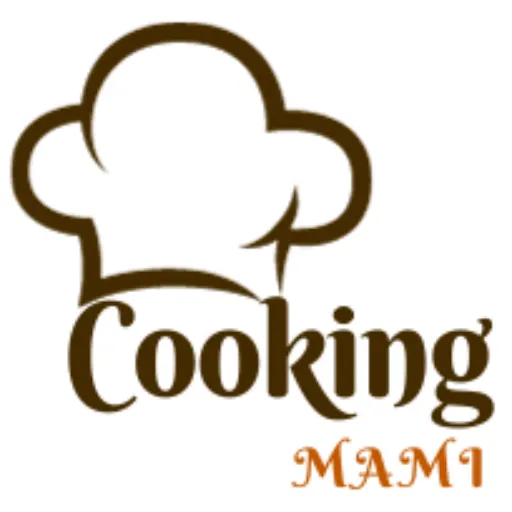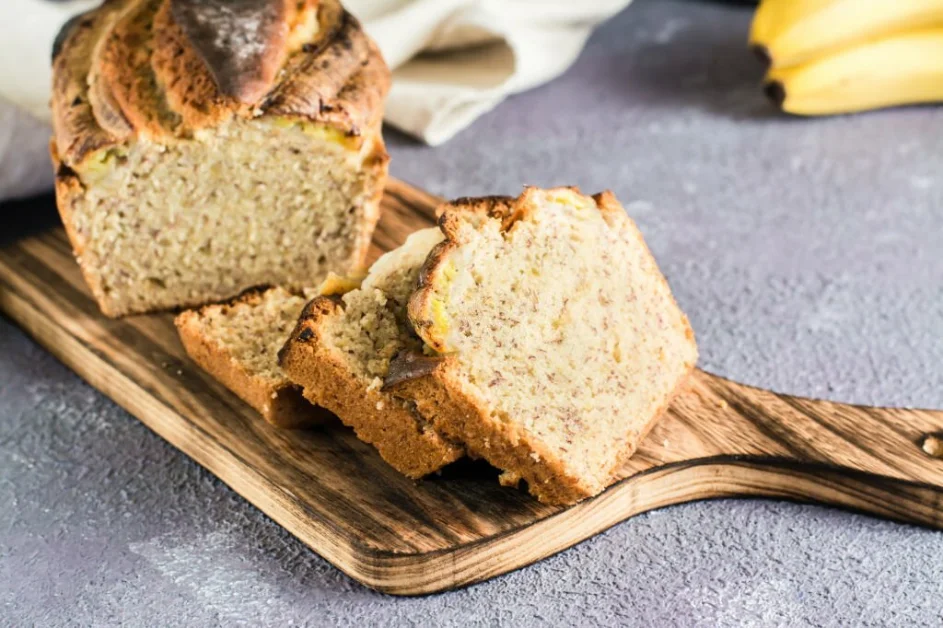Introduction to Banana Bread
Banana bread, a timeless and beloved treat, has a rich history that intertwines with culinary evolution and cultural traditions. This simple yet delightful quick bread, however, is celebrated not only for its moist texture but also for its sweet flavor, and additionally, for the comforting aroma it spreads while baking.A staple in home baking, banana bread ingeniously transforms overripe bananas into a delectable snack or breakfast option. Its popularity stems from its ease of preparation and the versatility it offers through various adaptations and flavor enhancements.
Key Ingredients for Banana Bread
The art of crafting the perfect banana bread begins with selecting the right ingredients. The foundation of any banana bread recipe includes:
- Flour: Provides structure
- Sugar: Adds sweetness and affects texture
- Baking Soda: A crucial leavening agent that helps the bread rise
- Salt: Enhances flavors
The character of banana bread comes alive with its wet ingredients:
- Mashed Bananas: The star ingredient, imparting moisture and a distinct banana flavor. Overripe bananas are preferred for their higher sugar content and ease of mashing.
- Greek Yogurt or Sour Cream: Adds richness and tenderizes the bread. For a dairy-free option, plant-based yogurts work well.
- Milk: Contributes to the bread’s moisture.
- Eggs: Bind the ingredients together and contribute to the rise.
- Melted Butter: Offers flavor and moisture. Vegan alternatives like coconut oil can be used.
- Vanilla Extract: Adds a subtle aroma and flavor.
Each ingredient plays a pivotal role in creating the bread’s texture and taste. For those interested in the origins and variations of these ingredients, Wikipedia offers insightful information on Baking Ingredients.
Follow these step-by-step instructions for a banana bread that rises to perfection:
Ingredients:
- 3 ripe bananas, mashed
- 2 cups all-purpose flour
- 1 teaspoon baking soda
- 1/4 teaspoon salt
- 1/2 cup unsalted butter, softened
- 1 cup granulated sugar
- 2 large eggs
- 1 teaspoon vanilla extract
- 1/2 cup chopped nuts (optional)
Instructions:
- Preheat your oven to 350°F (175°C). Grease and flour a 9×5-inch loaf pan.
- In a bowl, whisk together the flour, baking soda, and salt. Set aside.
- In another bowl, however, cream together the softened butter and sugar until light and fluffy. This process, known as the creaming method, helps incorporate air into the batter for a better rise.
- Beat in the eggs one at a time, ensuring each egg is well incorporated before adding the next. Stir in the vanilla extract.
- Gradually add the dry flour mixture to the wet ingredients and mix until just combined. Be careful not to overmix, as this can lead to a denser loaf.
- Gently fold in the mashed bananas and chopped nuts (if using). The bananas, on the other hand, provide both moisture and flavor, thus contributing to a delicious rise.
- Pour the batter into the prepared loaf pan, spreading it evenly.
- Bake in the preheated oven for approximately 60-65 minutes; alternatively, you can use a toothpick inserted into the center to check if it comes out clean. The baking time may vary slightly depending on your oven, so keep an eye on it.
- Once baked, remove the banana bread from the oven. Allow it to cool in the pan for about 10 minutes. Afterward, transfer it to a wire rack to cool completely.
Now you have a delectable banana bread with a perfect rise, ready to be enjoyed! For more inspiration and creative variations, you can explore Pinterest’s Banana Bread Recipe Ideas.
The Science of Rising: How Banana Bread Rises
Understanding the science of rising is key to mastering banana bread. The leavening agent, typically baking soda, reacts with acidic components in the batter (like yogurt or bananas), releasing carbon dioxide. This gas forms bubbles within the batter, causing it to expand and rise during baking. However, the ripeness of bananas is crucial in this process; overripe bananas not only impart a stronger banana flavor but also contribute significantly to the necessary acidity for the rise. Consequently, selecting the right stage of banana ripeness becomes an essential step in achieving the desired texture and flavor of the baked good.
The interaction between the ingredients and the heat of the oven creates a delicate balance. As the bread bakes, the gas expands, the batter sets, and the crust forms, resulting in the bread’s characteristic rise and texture. The process is a fascinating blend of chemistry and culinary art, further explored in Wikipedia’s article on Quick Breads.
Preparing the Perfect Batter
Achieving the perfect banana bread batter is a balance of mixing the right ingredients in the correct way. Here’s how to prepare it:
- Combine Dry Ingredients: Start by whisking together flour, sugar, baking soda, and salt in a large bowl.
- Mash the Bananas: In a separate bowl, thoroughly mash the bananas. The softer and more overripe, the better.
- Mix Wet Ingredients: To the bananas, add Greek yogurt (or a substitute), milk, eggs, melted butter, and vanilla extract. Whisk until well-blended.
- Combine Wet and Dry: Gently fold the wet mixture into the dry ingredients. Avoid overmixing to prevent developing too much gluten, which can make the bread tough.
The goal is a lumpy, just-combined batter that promises a tender and moist loaf. Overmixing the batter can lead to a dense and heavy bread; therefore, it is essential to mix the ingredients only until the flour is incorporated. Additionally, this approach ensures that the bread maintains its desired light and fluffy texture. For those looking to delve deeper into the art of mixing and preparing batters, Pinterest offers a wealth of Banana Bread Variations to explore.
Baking Techniques and Tips
Baking banana bread is both an art and a science. Here are some essential tips to ensure a perfect bake:
- Preheat the Oven: Always start with a preheated oven to ensure even baking. The ideal temperature for banana bread is around 350°F (175°C).
- Choose the Right Pan: A light-colored metal loaf pan is recommended for even baking. Dark or glass pans can cause the edges to overbake. The size of the pan also matters; a standard 9×5 inch pan is ideal. For more on selecting the right bakeware, Pinterest provides inspiration on Storing Baked Goods.
- Test for Doneness: Insert a toothpick into the center of the bread. If it comes out clean or with a few moist crumbs, the bread is done. An instant-read thermometer can also be used; aim for an internal temperature of 200-205°F. Furthermore, this ensures your dish is cooked to perfection.
Proper baking techniques ensure that the bread rises correctly and develops a golden-brown crust. The oven’s heat causes the gases in the batter to expand, contributing to the rise. For more detailed insights into baking techniques, Wikipedia’s article on Baking Techniques is an excellent resource.
Variations and Customizations
Banana bread is wonderfully adaptable, allowing for various customizations and variations. Here are some popular options:
- Add-Ins: Incorporate nuts like walnuts or pecans, chocolate chips, or spices like cinnamon for added flavor and texture. About 1/2 cup of add-ins is usually sufficient.
- Gluten-Free Options: Substitute regular flour with a gluten-free blend for a gluten-free version. Wikipedia provides more information on Gluten-Free Baking.
- Vegan Variations: Replace dairy ingredients with plant-based alternatives and use a vegan butter substitute or coconut oil. Pinterest offers creative ideas for Vegan Banana Bread.
These variations can transform the basic banana bread into a personalized treat that caters to different dietary needs and preferences. “Whether adding a crunchy topping or experimenting with different flours, the possibilities for customization are endless. Moreover, each variation not only introduces a new flavor profile but also allows for a unique textural experience. Consequently, these modifications can significantly enhance the overall appeal of the final product.
Troubleshooting Common Issues
Even with a great recipe, sometimes issues can arise when baking banana bread. Here are some common problems and their solutions:
- Under or Over-Rising: This can be due to incorrect oven temperature or improper mixing. Ensure your oven is correctly calibrated and avoid overmixing the batter.
- Moisture Control: If your bread is too dry, try adding a bit more mashed banana or yogurt. If it’s too moist, reduce the amount of banana or bake it a bit longer.
- Dense Texture: A dense loaf might result from overmixing or using bananas that aren’t ripe enough. Mix just until the ingredients are combined and use overripe bananas for the best results.
Understanding these issues and knowing how to address them can make the difference between good and great banana bread. For more troubleshooting tips, Pinterest’s collection of Moist Banana Bread recipes can be a helpful resource.
Storing and Preserving Banana Bread
Proper storage is key to maintaining the freshness and flavor of banana bread. Here are some tips:
- Room Temperature Storage: Keep the bread in an airtight container or wrapped in plastic wrap for up to a few days.
- Refrigeration: For longer storage, refrigerate the bread wrapped tightly in plastic wrap or in an airtight container.
- Freezing: Banana bread freezes well. Wrap it securely in plastic wrap and then in foil, and it can last for several months.
These storage methods help retain the bread’s moisture and flavor, ensuring that it remains delicious for days or even weeks. For additional storage ideas, Pinterest has a variety of tips on Storing Baked Goods.
FAQs: Common Questions About Banana Bread
Why did my banana bread not rise?
- This could be due to expired baking soda, undermixing, or not using enough ripe bananas. Ensure your baking soda is active and follow the recipe closely.
Can I make banana bread without eggs?
- Yes, there are egg substitutes like applesauce or commercial egg replacers that can be used. Pinterest has recipes for Eggless Banana Bread.
How can I make my banana bread more moist?
- Use more bananas, add yogurt, or a bit of oil to the batter.Overripe bananas, however, are particularly good for adding moisture. Furthermore, they can impart a richer flavor to your baked goods.
Can banana bread be made gluten-free?
- Absolutely! Use a gluten-free flour blend in place of regular flour. Wikipedia’s Gluten-Free Baking page has more information.
Is banana bread healthy?
- You can make banana bread healthier by using whole wheat flour, reducing sugar, or adding nuts for protein. However, most people generally consider it a treat.Nonetheless, some people indulge in it occasionally.

